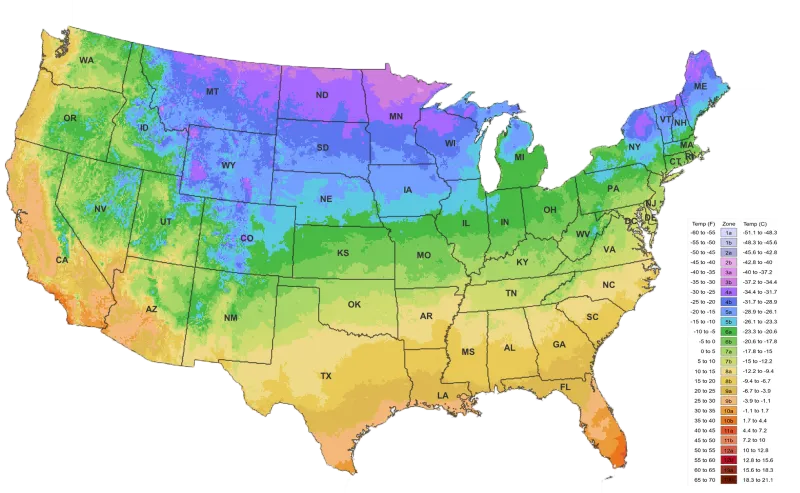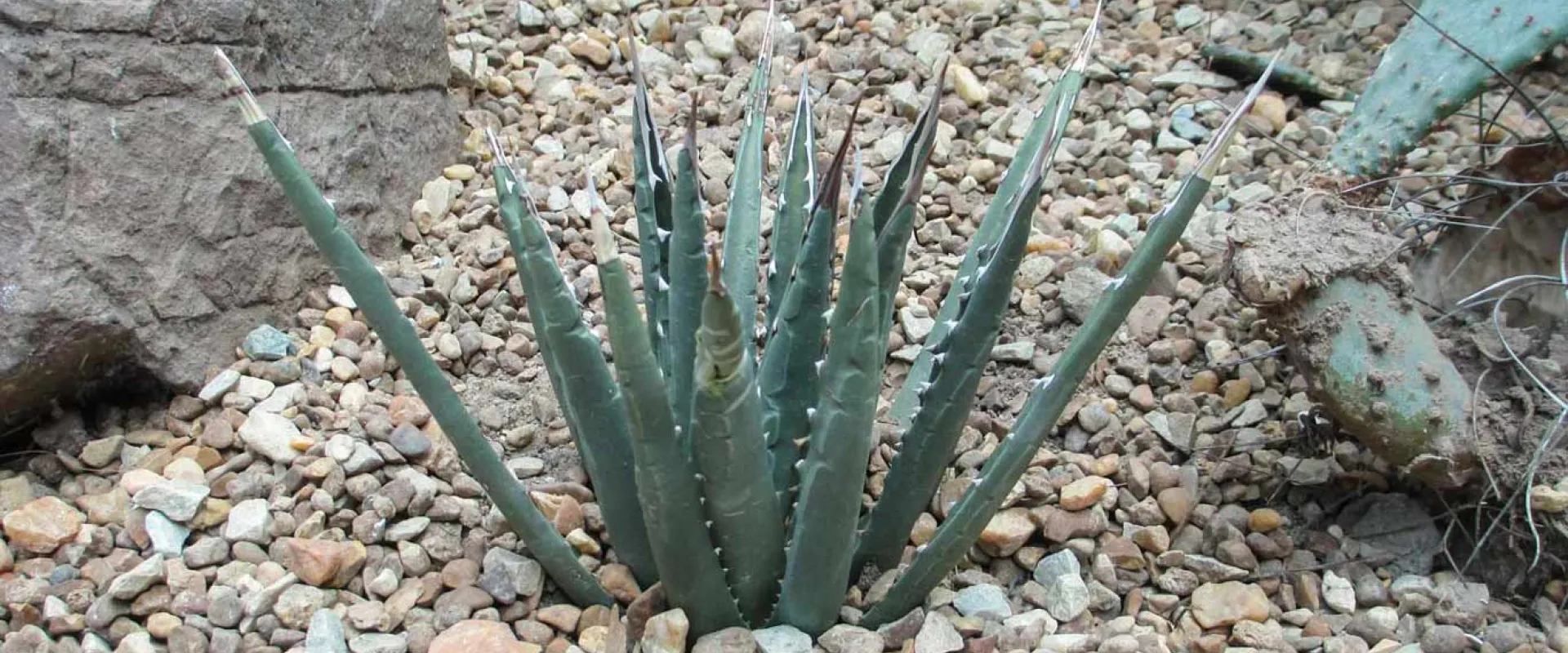About:
What agave produces yellowish flowers on an impressive flower spike that can reach up to 12 feet? Learn more about Utah Agave.
Agave utahensis
The USDA Plant Hardiness Zone Map is the standard by which gardeners and growers can determine which plants are most likely to thrive at a location. The map is based on the average annual minimum winter temperature, divided into 10-degree F zones.

6a (−10 °F to −5 °F)
6b (−5 °F to 0 °F)
7a (0 °F to 5 °F)
7b (5 °F to 10 °F)
8a (10 °F to 15 °F)
8b (15 °F to 20 °F)
9a (20 °F to 25 °F)
9b (25 °F to 30 °F)
10a (30 °F to 35 °F)
10b (35 °F to 40 °F)
Endangered Status
- Not Evaluated (NE)
